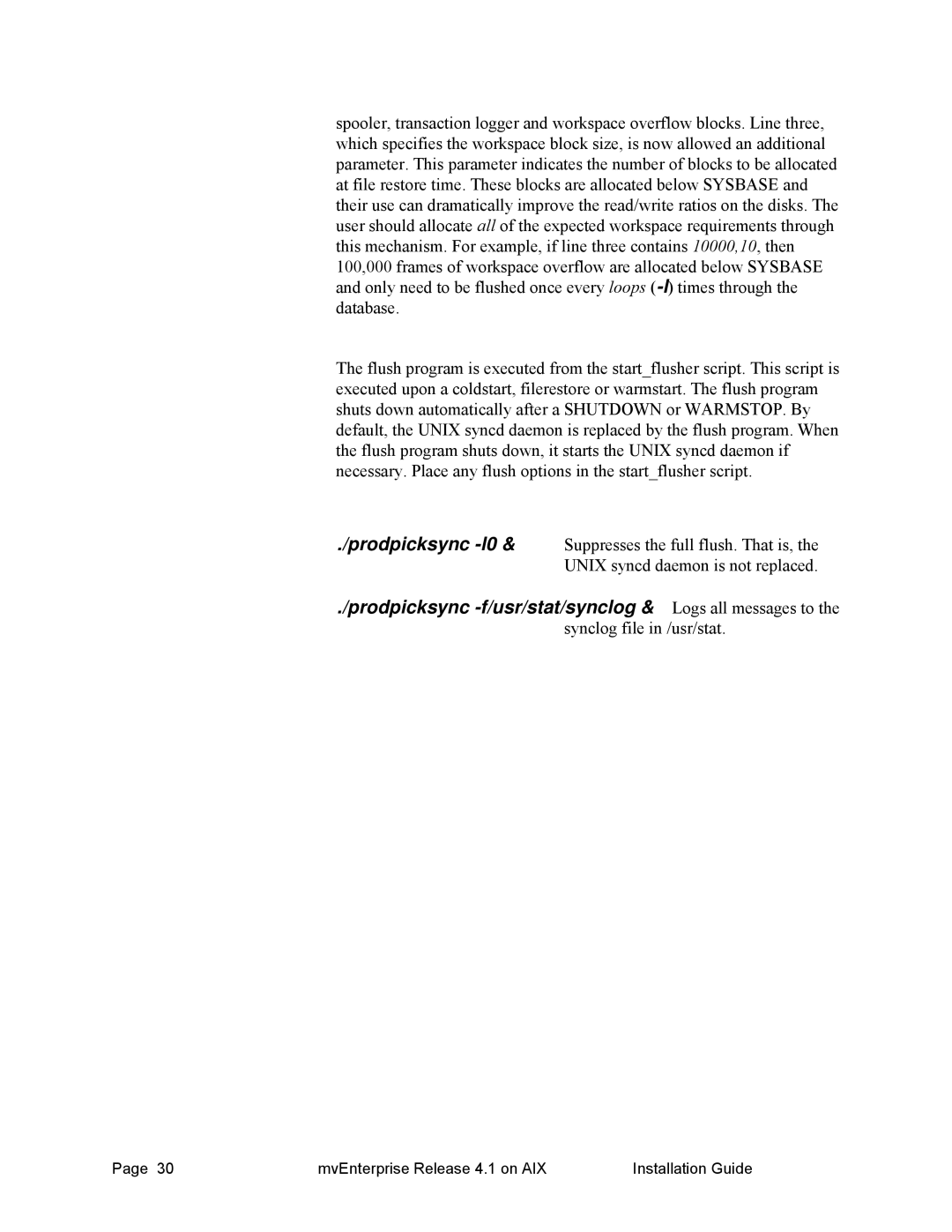spooler, transaction logger and workspace overflow blocks. Line three, which specifies the workspace block size, is now allowed an additional parameter. This parameter indicates the number of blocks to be allocated at file restore time. These blocks are allocated below SYSBASE and their use can dramatically improve the read/write ratios on the disks. The user should allocate all of the expected workspace requirements through this mechanism. For example, if line three contains 10000,10, then 100,000 frames of workspace overflow are allocated below SYSBASE and only need to be flushed once every loops
The flush program is executed from the start_flusher script. This script is executed upon a coldstart, filerestore or warmstart. The flush program shuts down automatically after a SHUTDOWN or WARMSTOP. By default, the UNIX syncd daemon is replaced by the flush program. When the flush program shuts down, it starts the UNIX syncd daemon if necessary. Place any flush options in the start_flusher script.
./prodpicksync
./prodpicksync
Page 30 | mvEnterprise Release 4.1 on AIX | Installation Guide |
